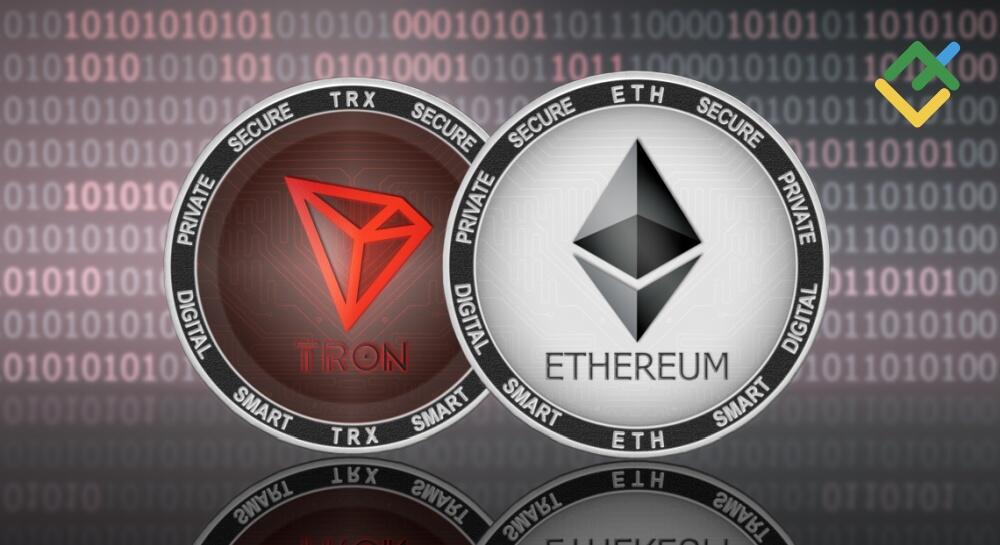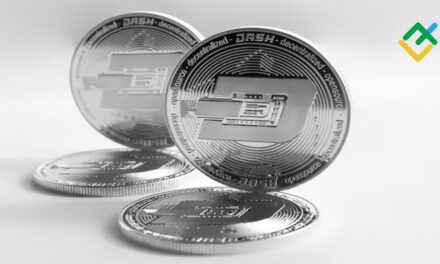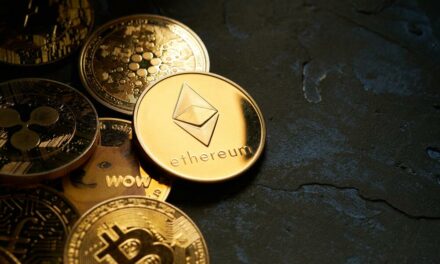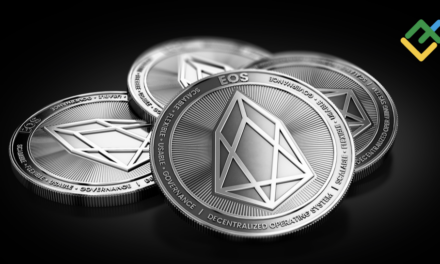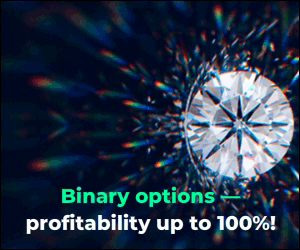TRC20 and ERC20 are two token standards operating on different networks: TRC20 on the Tron network and ERC20 on the Ethereum blockchain. Both standards facilitate the issuance and management of tokens, including stablecoins such as USDT. However, they differ in their characteristics.
It is important for users to understand the difference between TRC20 and ERC20 when choosing a method for transferring tokens and stablecoins. This is also important for developers involved in creating coins and using smart contracts. This article analyzes the characteristics of ERC20 and TRC20, smart contract functionality, transaction fees, scalable transactions, and network compatibility.
The article covers the following subjects:
Major Takeaways
- ERC20 and TRC20 are two different token standards that use the Ethereum blockchain and the Tron network, respectively.
- ERC 20 tokens operate within the extensive Ethereum ecosystem but come with high transaction fees.
- TRC 20 tokens offer lower fees and faster stablecoin transfers thanks to the Tron network.
- Smart contracts are a key component of both standards, providing the necessary functionality and governance.
- Transferring stablecoins via TRC20 networks is cheaper and faster than on the Ethereum network.
- In terms of network compatibility, ERC20 tokens are better integrated into decentralized applications (dApps), while TRC20 is used for fast and cheap crypto transactions.
- When choosing between TRC20 and ERC20, it is important to remember that TRC20 is better suited for frequent transactions, while ERC20 is optimal for long-term asset storage and use in DeFi.
What Is TRC-20?
TRC-20 is a coin standard used on the Tron network for creating and managing digital tokens. It is based on smart contracts and enables scalable transactions with low transaction fees.
The TRC-20 token is a popular solution for seamless coin transfers, including the stablecoin USDT. The Tron network is characterized by its high transaction speeds and efficient processing. It also supports TRC20 compatibility with the Ethereum network, facilitating token development and management within the ecosystem. TRC-20’s popularity can be attributed to its cost-effectiveness and high transaction throughput in the blockchain network.
Features of TRC-20
The TRC-20 standard offers a variety of features that make it a suitable and efficient tool for creating and using tokens on the Tron network. Let’s examine the key ones.
- High transfer speed. Processing takes only a few seconds thanks to the high throughput of the TRON blockchain network.
- Low transaction fees. Users pay lower transaction fees compared to the ERC20 standard.
- Smart contract support. The ability to automate token operations and integrate with various dApps.
- Network compatibility. Support for the Tron virtual machine makes TRC20 tokens convenient to use.
- Popularity in the stablecoin sector. USDT TRC20 is a popular choice for transfers due to its low fees and widespread use in the cryptocurrency segment.
- Flexibility in token creation. Users can easily issue and manage tokens on the Tron network.
- Seamless integration into crypto wallets. TRC20 is supported by most cryptocurrency wallets and exchanges.
Pros of TRC-20
The TRC20 token has become widely used thanks to its transaction speed and low fees. However, these are not its only advantages.
- Fast transactions. The Tron network enables transactions to be completed in a matter of seconds, making it one of the fastest blockchains.
- Low transaction fees. Transaction fees on the Tron blockchain are significantly lower than those on the Ethereum network.
- Scalability. The TRC-20 standard can support a large number of transactions per second without network congestion.
- Smart contract support. With TRC-20, you can automate financial transactions and create decentralized applications.
- Compatibility with major exchanges and crypto wallets. The TRC-20 standard is supported by most popular trading platforms.
- Suitable for mass payments and microtransactions. Low transaction costs make TRC-20 advantageous for performing many small transactions.
- Easy token creation. TRC-20-based coin development is available even for small projects.
Cons of TRC-20
Despite its advantages, TRC-20 tokens also have a number of limitations.
- Centralized management. The Tron network is controlled by a small group of validators, which reduces the level of decentralization.
- Limited use outside the Tron blockchain network. Unlike ERC20, the TRC-20 ecosystem is less developed and not as actively used in DeFi.
- Dependence on the Tron network. Any changes to the Tron blockchain can affect the operation of TRC-20 tokens.
- Low network compatibility. TRC-20 is not supported by the ETH blockchain, which limits the possibilities for interaction between different platforms.
- Less popular among dApp developers. Most smart contracts and decentralized applications are built on the Ethereum network.
- Risks of centralized control. The network can change its rules or be manipulated by developers.
- Provides less liquidity than ERC-20 tokens. In the battle between ERC20 and TRC20, the former usually wins due to the popularity of the Ethereum blockchain.
What Is ERC-20?
ERC-20 is a token standard based on the Ethereum blockchain network. It defines the logic for creating and managing ERC-20 tokens, ensuring their compatibility with smart contracts, exchanges, and crypto wallets.
ERC-20 has become the standard for most digital coins used in decentralized applications, DeFi projects, and ICOs. This standard facilitates the seamless transfer of tokens between users, the management of their balances, and the automation of transactions through the use of smart contract functionality. ERC20’s extensive ecosystem ensures support from virtually all platforms and services in the crypto market.
Features of ERC-20
The Ethereum token standard regulates the issuance and management of ERC-20 tokens, which are compatible with most crypto wallets and exchanges. It has the following features:
- Network compatibility. All ERC-20 tokens can work with smart contracts, DEX platforms, and DeFi apps.
- Standardized transactions. ERC-20 guarantees predictable token operation in the Ethereum ecosystem.
- Development flexibility. Developers can easily create and customize digital tokens with the desired features.
- Coin issuance. New ERC-20 tokens can be issued through smart contracts.
- DeFi use. The standard is widely used in the crypto industry for staking, lending, and liquidity.
- Use in ICOs. Most projects conduct their initial coin offerings using the ERC-20 standard on the Ethereum blockchain.
- Integration. ERC-20 is supported by all major crypto exchanges.
Pros of ERC-20
ERC-20 has become the most popular standard for issuing cryptocurrency tokens thanks to its reliability and versatility. At the same time, it also has the following advantages:
- Extensive Ethereum ecosystem. Thousands of projects use ERC20, which ensures liquidity.
- Smart contract functionality. It provides automation of operations, security, and transparency.
- Fungible tokens. All ERC-20 tokens have the same value and can be exchanged.
- Ease of integration. Projects can easily adopt ERC20 thanks to unified standards.
- Development flexibility. Ability to customize token logic.
- Security. Ethereum blockchain technology ensures data protection.
- Widespread use. All major cryptocurrencies support ERC20.
- Liquidity. Availability on major exchanges makes ERC20 tokens convenient for trading.
- Blockchain technology. Ensures transparency of transactions.
Cons of ERC-20
Despite its popularity, ERC-20 has a number of limitations related to transaction fees and processing speed.
- High transaction fees. Gas fees on the Ethereum network are significantly higher than those of its counterparts.
- Lower transaction speed. The Ethereum network can experience congestion, which leads to slower transaction processing times.
- Transaction costs. During peak periods, gas prices increase even more.
- Complexity of token management. Managing ERC-20 tokens requires knowledge of smart contracts.
- Limited scalability. High network load leads to delays.
- Dependence on Ethereum. The price of ERC-20 tokens can be indirectly affected by gas prices on the Ethereum network.
- Token transfer. It may require additional fees.
- Ethereum virtual machine. Executing complex smart contracts requires significant resources.
Despite its drawbacks, ERC-20 is used as the standard for issuing tokens and is widely adopted in the crypto industry.
TRC-20 vs. ERC-20: Key Differences
TRC-20 and ERC-20 are token standards that operate on the TRON and Ethereum networks, respectively. They are used for issuing and transferring cryptocurrency coins. The main differences between them are transaction speeds, fees, and smart contract features.
Blockchain Technology
TRC-20 uses the TRON blockchain network, which includes a virtual machine of the same name. It enables smart contracts to be executed with high efficiency. Transaction fees on the TRON network are minimal, and blocks are generated quickly, which improves transaction scalability.
ERC-20 operates on the Ethereum blockchain, which relies on the Ethereum virtual machine. It offers a high degree of security and decentralization, but due to high network load, transactions may experience delays.
The primary distinction between TRC-20 and ERC-20 lies in their respective focuses: TRON prioritizes reduced transaction costs and accelerated processing, while Ethereum offers a comprehensive ecosystem and support for advanced smart contracts.
Transaction Speed
The TRON network boasts high transfer speeds, with the capacity to process up to 2,000 transactions per second. This efficiency is achieved through the use of the Delegated Proof-of-Stake (DPoS) mechanism, which facilitates swifter transaction validation. As a result, TRC-20 tokens can be transferred between wallets almost instantly.
The Ethereum network uses the Proof-of-Stake (PoS) algorithm, which, despite its increased efficiency, still lags behind TRON in terms of transaction speed. The processing time for a single transaction can range from 15 seconds to several minutes, depending on network load.
Therefore, in the comparison between ERC20 and TRC20, the latter demonstrates an advantage in processing speed. This distinguishes TRC20 as a preferred option for those who prioritize swift crypto transactions.
Transaction Fees
One of the key differences between TRC-20 and ERC-20 tokens is the difference in transaction costs.
- TRC-20 on the TRON network offers reduced fees. TRON’s energy-based transaction system significantly reduces costs compared to traditional gas-based models. This feature enhances TRC20’s suitability for micropayments.
- ERC-20 has higher transaction costs. This is due to the fact that users pay for gas on the Ethereum blockchain. During periods of network congestion, costs can reach significant amounts.
Therefore, the distinction between ERC20 and TRC20 becomes apparent: ERC20 tokens offer superior support for smart contracts. However, their application is associated with significant transaction costs.
Network Compatibility
When selecting between ERC20 and TRC20 tokens, it is crucial to consider their compatibility with existing ecosystems. The Ethereum network encompasses a broad ecosystem comprising decentralized applications (dApps), smart contracts, and crypto wallets. This blockchain is widely used in the DeFi space, making ERC20 the preferred choice for complex financial transactions.
In contrast, TRON prioritizes high transaction speed and reduced fees. TRC20 tokens are well-suited for frequent crypto transactions and money transfers. However, the functionality of smart contracts on the TRON blockchain is comparatively limited when benchmarked against Ethereum.
The distinction between ERC20 and TRC20 lies in their level of integration with DeFi, scalability, and user base size. ERC20 tokens are better suited for complex dApps, while TRC20 tokens are preferable for fast and inexpensive coin transfers.
USDT TRC-20 vs. ERC-20: A Practical Comparison
The USDT token is a popular stablecoin that operates on various blockchain networks, including Ethereum and TRON. The main differences between USDT ERC20 and TRC20 also lie in transfer speeds, transaction fees, and network compatibility.
ERC20 offers an extensive ecosystem on the Ethereum blockchain and high compatibility with smart contracts, but transaction costs are higher. TRC20 on the TRON network, on the other hand, offers lower fees and high transfer speeds, but does not have such a developed infrastructure for DeFi.
|
Characteristics |
USDT ERC-20 |
USDT TRC-20 |
|
Blockchain |
Ethereum |
TRON |
|
Average transaction processing speed |
35–60 seconds |
3–5 seconds |
|
Gas fees |
About $8, depending on network load |
About $2 |
|
Network compatibility |
Extensive support for dApps and DeFi |
Supported by crypto exchanges only |
|
Transaction processing |
Low transaction throughput |
Almost instant |
|
Application in DeFi |
Supports smart contracts |
Limited use in DeFi |
|
Security |
High |
Sufficient, but lower than Ethereum |
|
Adoption by crypto exchanges |
Broad support |
Supported on most platforms |
When choosing between TRC20 and ERC20, it is important to consider which is better suited to your needs. If you seek lower transaction fees and faster transfer speeds, TRC20 would be the preferred option. However, when it comes to smart contracts and ensuring more secure storage of funds, ERC20 emerges as the more advantageous option.
Major crypto exchanges such as Binance and Huobi support both USDT network standards, but transactions on the Ethereum network incur gas fees, which can be unpredictable due to network congestion. TRON’s blockchain has minimal fees, making TRC20 a suitable option for frequent transfers.
In summary, the difference between ERC20 and TRC20 stems from transaction costs, speed, and network compatibility. TRC20 is ideal for fast and inexpensive transfers, while ERC20 is better suited for long-term investors and DeFi.
Choosing Between TRC-20 and ERC-20
The choice between TRC20 and ERC20 depends on how the tokens will be used. When selecting a payment solution, it is essential to consider factors such as transaction speed, fees, and network compatibility.
If efficiency and cost reduction are your priorities, TRC20 is the optimal solution. The TRON network facilitates lower fees and expedites transaction confirmation, enhancing the efficiency and security of the system. This feature enhances the convenience of token transfers, cryptocurrency trading on exchanges, and online payments.
ERC20 is the standard for the Ethereum blockchain network, which offers an extensive ecosystem. This makes it the preferred option for working with smart contracts and DeFi projects. However, high gas fees and slower transaction speeds can serve as obstacles for active traders.
You can choose TRC20 if:
- You want lower transaction fees.
- Prioritize high transaction speed.
- You need to transfer coins between exchanges or crypto wallets.
You can choose ERC-20 if:
- You seek network compatibility with DeFi and NFT.
- Your coins will be used with smart contracts.
- Long-term storage of funds in a reliable ecosystem is important for you.
Therefore, the advantages of ERC20 and TRC20 are determined by your needs. TRC20 offers enhanced speed and reduced costs, while ERC20 provides security, compatibility, and functionality.
Conclusion
The choice between TRC20 and ERC20 depends on your goals. TRC-20 offers high transaction speeds and lower transaction costs, making it convenient for frequent transfers. ERC-20, on the other hand, provides network compatibility and integration with smart contracts, which is important for DeFi and NFT projects. Both standards have their advantages and limitations, which should be carefully considered before making a choice. A thoughtful analysis of their characteristics will help you choose the best option for using cryptocurrency coins.
USDT ERC20 vs TRC20 vs FAQs
The content of this article reflects the author’s opinion and does not necessarily reflect the official position of LiteFinance broker. The material published on this page is provided for informational purposes only and should not be considered as the provision of investment advice for the purposes of Directive 2014/65/EU.
According to copyright law, this article is considered intellectual property, which includes a prohibition on copying and distributing it without consent.

